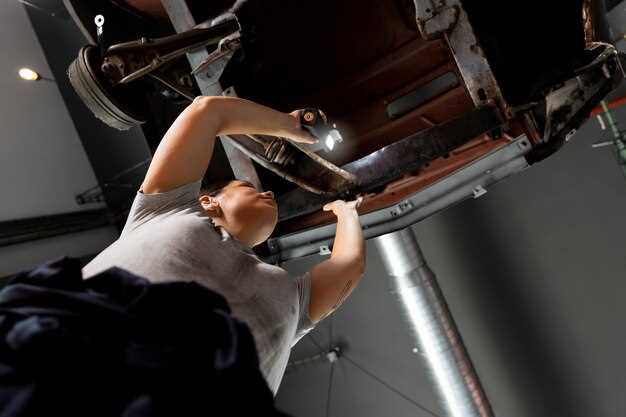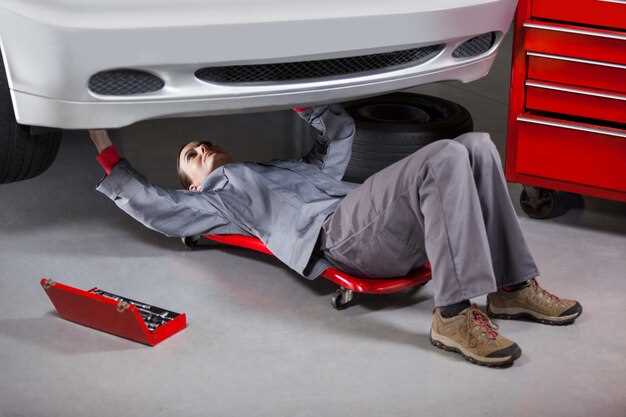
Identifying and addressing exhaust leaks is crucial for maintaining vehicle performance and ensuring safety on the road. Exhaust leaks may initially go unnoticed, but they can lead to serious issues if not promptly dealt with. These leaks typically occur due to corrosion, rust, or damage to the exhaust system components. Understanding the symptoms of exhaust leaks can help car owners effectively diagnose and resolve these problems before they escalate.
Common symptoms of exhaust leaks include increased engine noise, decreased fuel efficiency, and the presence of exhaust fumes inside the vehicle. Additionally, warning indicators on the dashboard may appear, signaling potential issues with the vehicle’s emission control systems. Being vigilant about these signs can save time and repair costs, making it essential to recognize them early.
Once an exhaust leak is suspected, it is important to explore effective repair solutions. This may involve inspecting the exhaust components, using sealants, replacing damaged parts, or, in severe cases, a complete system replacement. This article will provide detailed guidance on identifying symptoms of exhaust leaks and exploring practical solutions to achieve a robust and efficient exhaust system.
How to Recognize Common Symptoms of Exhaust Leaks
Exhaust leaks can lead to significant engine performance issues and pose safety risks due to the potential for carbon monoxide exposure. Recognizing the symptoms early can help prevent extensive damage and costly repairs.
One of the most noticeable symptoms is an abnormal noise coming from the exhaust system. This noise may vary from a hissing or popping sound to a loud rumble. These sounds typically indicate escaping gases due to a crack or hole in the exhaust piping.
Another common symptom is a decrease in engine performance. If you’re experiencing reduced power, sluggish acceleration, or a decline in fuel efficiency, it may be a sign of an exhaust leak. The engine struggles to expel gases properly, affecting overall performance metrics.
Additionally, you might notice an unusual smell, particularly a strong odor of exhaust fumes in or around the vehicle. This occurs when exhaust gases, which should be routed away from the engine, leak into the cabin or surrounding environment. It poses serious health risks, especially if carbon monoxide is present.
Check for visible signs of soot or discoloration around the exhaust manifold, piping, or joints. These may indicate areas where exhaust gases are leaking, suggesting a potential issue that requires immediate attention.
If the check engine light illuminates on your dashboard, this could also indicate an exhaust leak. Modern vehicles have various sensors that monitor the exhaust system; a malfunction can trigger the warning light.
Finally, pay attention to any vibrations or a rough idling sensation while the engine is running. These symptoms can suggest that your exhaust system is not functioning correctly, which might stem from a leak impacting engine airflow and performance.
Step-by-Step Guide to Diagnosing Exhaust Leaks in Your Vehicle

Identifying exhaust leaks in your vehicle is essential for maintaining optimal performance and ensuring safety. Here’s a comprehensive guide to help you diagnose these leaks effectively.
Step 1: Visual Inspection
Start by performing a thorough visual examination of the exhaust system. Look for any signs of damage, such as rust, cracks, or holes on exhaust pipes, mufflers, and joints. Pay particular attention to areas where components connect, as these are common leak points.
Step 2: Listen for Unusual Noises
Start your vehicle and listen closely for unusual sounds. A hissing, popping, or rumbling noise is often indicative of an exhaust leak. Use your ears to pinpoint the location of the sounds, focusing on the area around the exhaust manifold, catalytic converter, and muffler.
Step 3: Use Soapy Water
Mix water with dish soap in a spray bottle and apply it generously to suspect areas of the exhaust system while the engine is running. Bubbles will form at the site of any leaks, providing a clear indication of where the exhaust is escaping.
Step 4: Verify with a Smoke Test
If available, consider using a smoke machine to introduce smoke into the exhaust system. The smoke will easily escape from any leaks, making them visible. This method is effective in identifying leaks that might not be apparent through sound or visual inspection.
Step 5: Check the Exhaust Manifold
Examine the exhaust manifold and its connections. Pay attention to the bolts securing it to the engine. Loose or damaged bolts can lead to leaks. Tighten any loose bolts and replace any that are damaged.
Step 6: Inspect Gaskets and Flanges
Focus on gaskets and flanges connecting various components of the exhaust system. Inspect these parts for wear or damage. Replace any faulty gaskets, as worn gaskets are a common cause of leaks.
Step 7: Conduct a Performance Check
Evaluate your vehicle’s performance. Reduced power, poor fuel economy, or increased emissions can indicate an exhaust leak. If you observe any of these symptoms alongside your inspection, further investigation may be necessary.
Step 8: Seek Professional Help
If you are unable to locate a leak or if repairs seem beyond your skill level, consult a professional mechanic. A trained technician can perform advanced diagnostics and ensure your exhaust system is functioning optimally.
This step-by-step guide should assist you in effectively diagnosing exhaust leaks in your vehicle, allowing for timely and appropriate repairs.
Practical Repair Techniques for Exhaust Leak Issues

Identifying and repairing exhaust leaks is crucial for maintaining your vehicle’s performance and ensuring safety. Below are practical techniques for addressing these issues effectively.
1. Visual Inspection
Begin by conducting a thorough visual inspection. Look for rust, cracks, or holes in the exhaust system, particularly around the joints and seams. Pay close attention to the gaskets, as these are common failure points. If you notice any damage, mark the areas for repair.
2. Sound Diagnosis
Listen for unusual sounds while the engine is running. A hissing or popping noise often indicates a leak. If it is difficult to locate the source, using a mechanic’s stethoscope or a length of hose can help direct sound and pinpoint the leak’s location.
3. Smoke Test
A smoke test can effectively reveal exhaust leaks. Introduce smoke into the exhaust system through a smoke machine or by using a smoke bomb. Observe for any escaping smoke, which will indicate the location of the leak and confirm the necessity of repair.
4. Temporary Fixes
If immediate repairs are not feasible, temporary solutions can help manage leaks. Exhaust tape or silicone sealant can be applied to small cracks and holes. While this is not a long-term solution, it can reduce noise and emissions until a permanent fix is made.
5. Replacement of Gaskets and Seals
Worn or damaged gaskets are often the cause of exhaust leaks. Replacing these components is a straightforward task. Ensure that you clean the mating surfaces thoroughly before installing new gaskets to ensure a proper seal.
6. Welding and Fabrication
For more significant leaks, especially in the muffler or tailpipe, welding may be needed. If you have the skills, you can use a MIG or TIG welder to repair holes. If not, consult a professional technician who can perform these repairs safely.
7. Full System Replacement
In cases where the exhaust system is severely corroded or damaged, a full replacement may be necessary. When selecting a new exhaust system, consider quality materials and parts that comply with your vehicle’s specifications.
8. Regular Maintenance
Preventative maintenance is key to avoiding future leaks. Regularly inspect your exhaust system during oil changes and keep an eye out for signs of wear. Addressing minor issues promptly can prevent costly repairs later on.
By employing these practical repair techniques, vehicle owners can effectively manage and resolve exhaust leak issues, ensuring optimal performance and safety.




